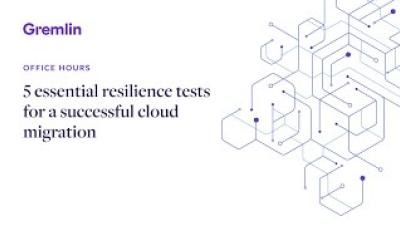Why Gremlin: Today's complex applications need a different approach to reliability
Cloud-based distributed applications have changed how we need to approach reliability and resiliency. How do you make your applications reliable? Here’s Gremlin CEO Josh Leslie to tell you how. Today’s dynamic applications are too complex and constantly changing for humans to wrap their heads around. This means the reliability approaches that worked ten years ago simply won’t be enough. As a technology company (and these days, every company is a technology company), you need to take a different, programmatic approach to testing and improving the reliability of your applications.











